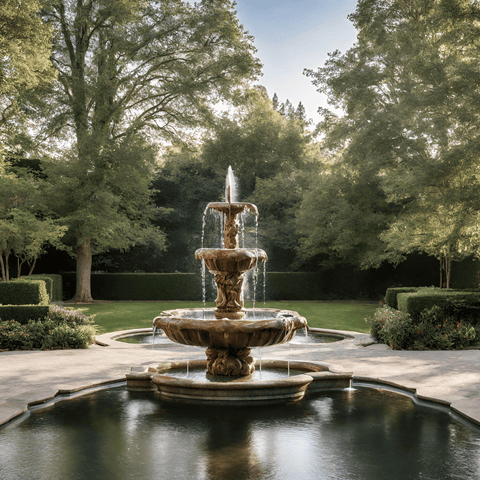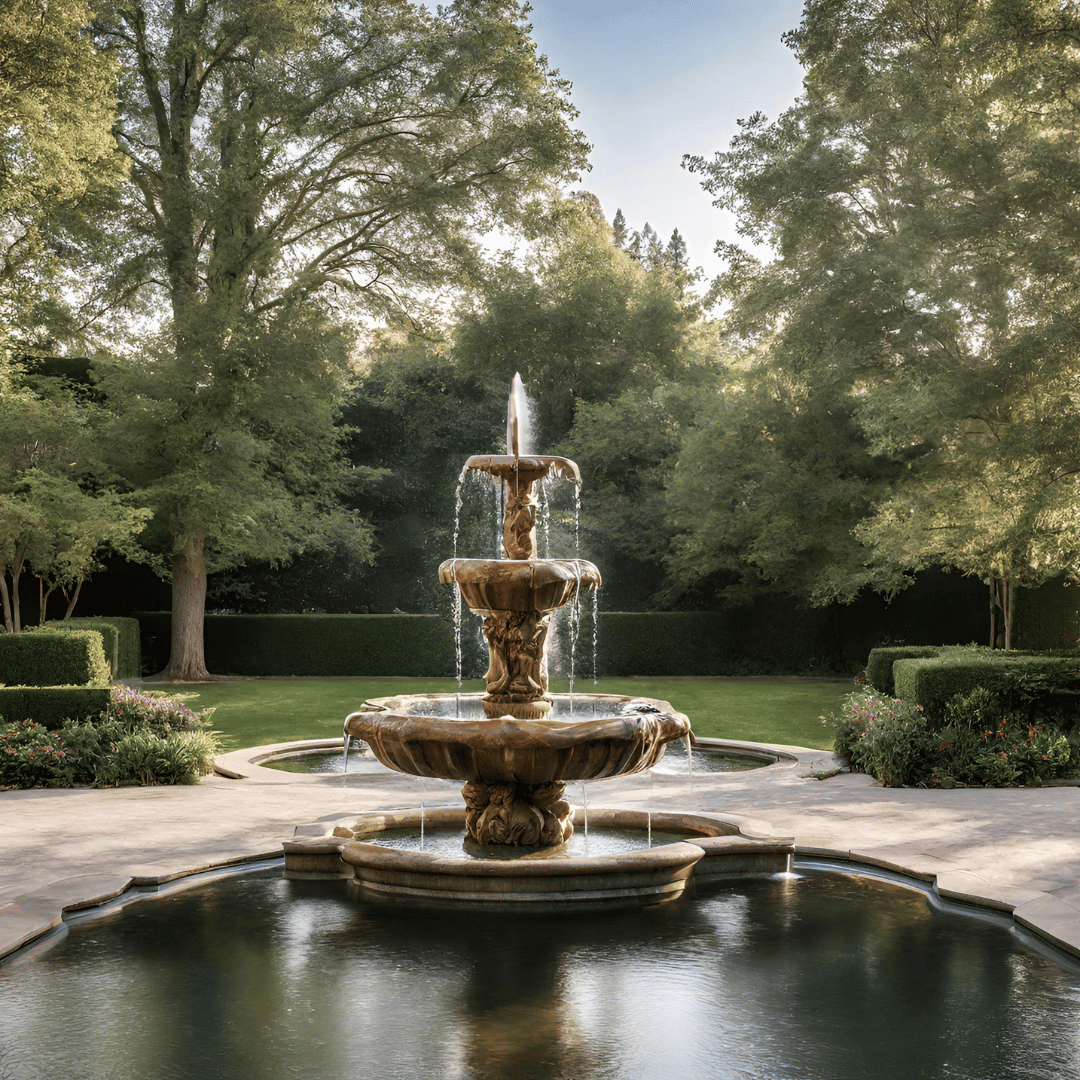Understanding Space and Fountain Proportions
Before delving into the various fountain styles, it’s essential to assess the area where you plan to install your fountain. The size of your space will largely dictate the size of the fountain that will look best. A large, grand fountain can become the focal point in a spacious garden, while a smaller, more subtle piece may be ideal for a cozy patio or indoor room.
Measure Your Space
Start by taking accurate measurements of the area where the fountain will be placed. Consider not only the ground area but also the height of the space. A tall fountain in a room with a low ceiling, or a large outdoor space with a short fountain, can throw off the balance and feel of the area.
Visualize the Fountain in Your Space
It can be helpful to visualize the fountain in your space before making a purchase. Use a garden hose or rope to outline the fountain's footprint. This will give you a better sense of the scale and how much room the fountain will occupy.
Determining the Right Fountain Size
As a general rule, the fountain should be scaled to the size of the space it occupies. Here are some guidelines to consider:
- For indoor spaces, a fountain that is too large can overwhelm the room, while one that is too small may go unnoticed. Aim for a size that complements your furniture and the room's scale.
- In an outdoor setting, consider the size of your yard and the landscaping elements present. A fountain should be large enough to be a statement piece without dominating the entire garden.
- The height of the fountain is just as important as its footprint. Ensure that the fountain’s height is in proportion to the space’s vertical dimensions.
Choosing the Fountain Style
Once you have an idea of the size you need, the next step is to select a fountain style that complements your space and personal taste.
- Tiered fountains are classic and can serve as a dramatic centerpiece in large outdoor areas.
- Wall fountains are ideal for smaller spaces or as an accent in a larger setting.
- Tabletop fountains are perfect for indoor spaces or small patios, adding a touch of elegance without requiring much space.

Material Matters
Fountains come in various materials, including stone, metal, fiberglass, and ceramic. The material can influence the size and presence of the fountain in your space.
- Stone and concrete fountains are substantial and can appear larger due to their solid construction.
- Metal and fiberglass options are lighter and can be more flexible in terms of placement and perceived size.
Water Flow and Sound
Consider the sound level and water flow you desire, as this can impact the size of the fountain you choose. A larger fountain with multiple tiers will produce more sound, while a smaller, single-tier fountain will offer a subtler presence.
Installation and Maintenance
Before finalizing your fountain choice, think about the installation process and ongoing maintenance. Larger fountains may require professional installation and more maintenance, which can impact your decision based on your willingness to commit to upkeep.

Large Fountains Vs. Small Fountains
When distinguishing between a large water fountain and a small water fountain, several defining characteristics come into play that not only impact their visual presence but also their functional roles within a given space.
Large water fountains often serve as grandiose centerpieces in spacious outdoor environments such as expansive gardens, public parks, or corporate exteriors. Their size allows for intricate designs, multiple tiers, and significant water features that can include cascades or powerful jets, which contribute to a commanding auditory presence — the resonant sound of water can be heard from a distance, creating a tranquil soundscape that envelops the surrounding area. This acoustic feature can be a deliberate choice for larger fountains to mask the ambient noise of urban settings or to enhance the peacefulness of a quiet garden.
Small water fountains are typically designed for intimate spaces or as complementary pieces within a larger design scheme. They fit perfectly in cozy garden corners, indoor rooms, or on tabletops, providing a subtle, soothing background noise that doesn't overwhelm the senses. The scale of small fountains lends to less complex designs, with fewer tiers and more simplistic water flows that focus on gentle trickling rather than a vigorous display. This doesn't diminish their aesthetic value; rather, it tailors their appeal to closer, more personal interactions where the details of the fountain can be appreciated up close.
Large fountains are often constructed from durable materials like stone, concrete, or metal to withstand the elements and the weight of larger water volumes.Their robust nature means they are an investment in a permanent fixture, potentially increasing the value of a property.
Small fountains, on the other hand, afford more versatility in material choices, with options like ceramic, glass, fiberglass, or resin being common due to their lighter weight and ease of movement. This allows for greater flexibility in placement and style changes in the space.
Large fountains usually require professional installation, involving considerations like water supply lines, electrical wiring for pumps, and foundational support. They also demand more rigorous maintenance routines to ensure their complex systems are functioning correctly and to prevent algae growth and blockages within their expansive structures.
Small water fountains are generally more user-friendly. Often coming as self-contained units that are easy to set up and maintain, making them a popular choice for casual gardeners or those looking for a simple yet elegant touch to their living spaces.
Ultimately, the choice between a large water fountain and a small water fountain depends on the intended impact, the size of the area, and the practicality of upkeep. Large fountains can transform an area into a stately, immersive environment, while small fountains offer a more understated charm and ease of care. Both have the potential to enhance the beauty and ambiance of a space, but it's their distinctive characteristics that will guide a buyer's decision to ensure the fountain serves as a harmonious addition to their environment.
Conclusion
Choosing the correct size fountain for your space involves careful consideration of the area's dimensions, the fountain's style and material, and the practical aspects of installation and maintenance. By following this guide, you'll be able to select a fountain that not only fits perfectly in your space but also enhances the overall environment, providing a focal point that is both visually stunning and audibly soothing.
Remember, the goal is to find a fountain that feels like a natural extension of your space. With the right size and style, your fountain will be a source of joy and serenity for years to come.

